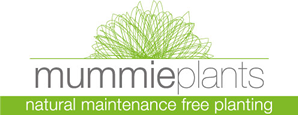Plants are instinctive. Within 2 weeks, a planted seed can sense how much space its roots will have to grow into. Plenty, and it will flourish. Little, and it will deliberately limit above-the-ground growth to compensate. These ‘sense checks’ continue throughout the life of an indoor plant. Meaning that, if you want your business plants to radiate good health, you need to factor in periodic repotting.
Plant Illness: The Root Causes
When a plant loses its lustre the common reaction is to tackle the visible problem. Tearing off limp or off-colour leaves is expected to take some of the pressure off the plant and encourage it to focus on nourishing and primping the healthier leaves. More often than not, this only addresses the symptoms. Leaves set your alarm bells ringing but the underlying cause of most plant problems tends to stem from outside your field of vision, in the obscurity of the plant pot.
Roots: A Mind of their Own
It’s a fact of life. Roots grow down. Deeper and deeper down, as far as the earth permits. Some attribute this to gravitropism others to auxin, a directional plant hormone. Others simply believe that plants are hard-wired to plumb the depths for scarce minerals and water. Experiments in the International Space Station conclude that negative phototropism (an aversion to light) is responsible. Whatever the reasons, roots need room. Ever worn shoes that were too small for you? Think about how this felt next time you see a very large plant in a very small pot.
A Plant Pot Is Not For Life
Keeping an indoor plant in the one pot for an extended period leaves you susceptible to a series of issues. First off, the original potting mix will deteriorate. Oragnic elements like peat moss will disintegrate. Salts and mineral residues from water and fertilisers can build to harmful levels. The soil’s nutrient content will be exhausted. More critically, the plant’s roots will have nowhere to grow but in a circle that chokes off food supply to the upper foliage and strangles the now “root bound” plant. But all these setbacks can be averted by regular ‘pot and mix upgrades’. Just make sure to build them into your plans and budgets when investing in living plants.
Repotting Your Office Plants
For advice on repotting your office plants the article “The Perfect Pot” by Adrian Higgins of the Washington Post is a great place to start. Be prepared for your plants to wilt a bit after the stress of being transplanted. And take into account this note of caution from the BBC Nature website: “Plants grown in pots that are too large are susceptible to root disease because of excess moisture retained in the soil”.
Problem-Free Pot Plants
Monitoring and maintaining the root health of regular office plants can be a bothersome and budget-sapping process. Not so with Mummie Plants. Mummie Plants are a new breed of business plant. We harvest ordinary plants at their peak and preserve them in a constant state of vibrant vitality. Because a natural preservation fluid keeps our plants hydrated they have no need for water and hence no need for roots. Buy any species of Mummie Plants and you need never worry about root problems or repotting hassles.
Our plants come in a stylish range of planters that offer additional benefits. See our Planters, Pots & Containers Gallery: they are lighter than normal so are easier to move, they need no drainage so cause no mess and they will save you the costs of pot upgrades and repots.
For more information on avoiding office plant headaches call 01 296 4540.
(Cover photo from itsoktobesmart.com)
